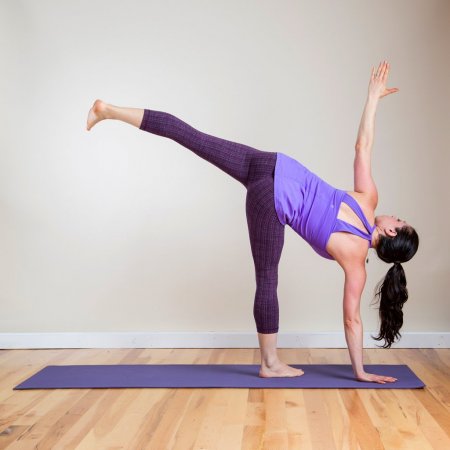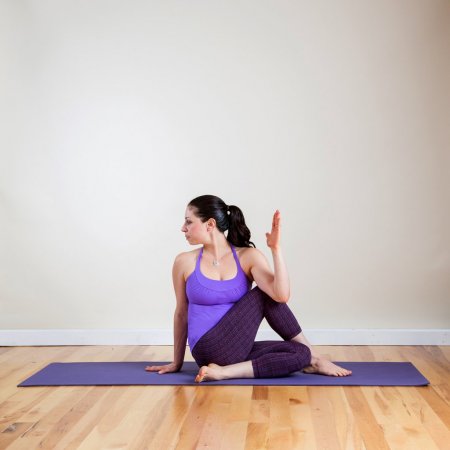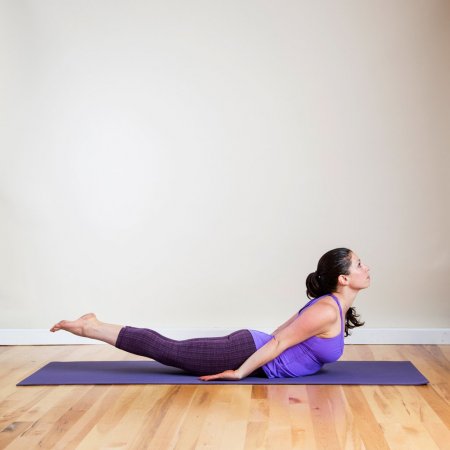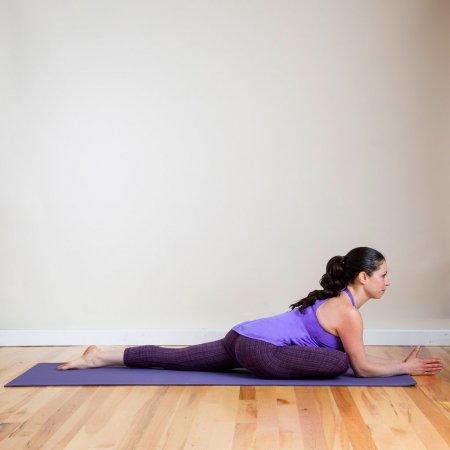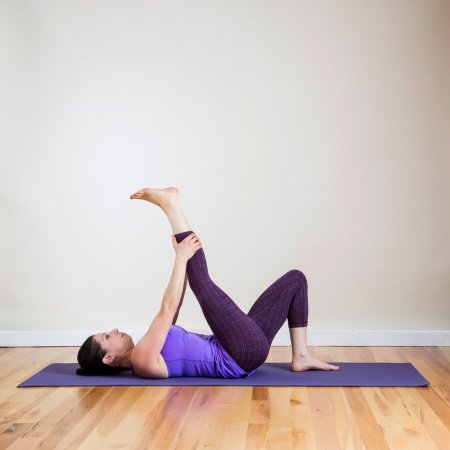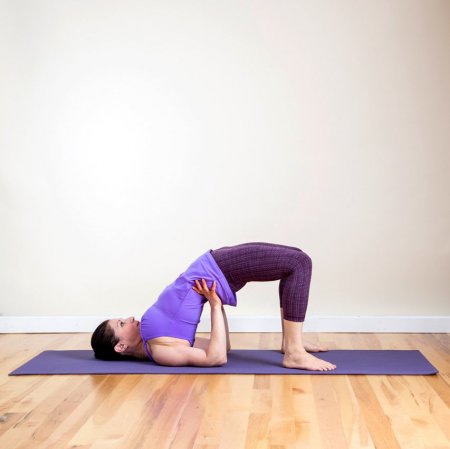What You Need to Know About Sciatica+8 Stretches That Can Help Ease the Pain
The term sciatica describes the symptoms of leg pain—and possibly tingling, numbness, or weakness—that originate in the lower back and travel through the buttock and down the large sciatic nerve in the back of each leg.
Sciatica (pronounced sigh-at-eh-kah) is not a medical diagnosis in and of itself—it is a symptom of an underlying medical condition. Common lower back problems that can cause sciatica symptoms include a lumbar herniated disc, degenerative disc disease, spondylolisthesis, or spinal stenosis.
Sciatica is often characterized by one or more of the following symptoms:
While symptoms can be painful and potentially debilitating, it is rare that permanent sciatic nerve damage (tissue damage) will result, and spinal cord involvement is possible but rare.
Sciatica is caused by irritation of the root(s) of the lower lumbar and lumbosacral spine.
Additional common causes of sciatica include:
Other things that may make your back pain worse include being overweight, not exercising regularly, wearing high heels, or sleeping on a mattress that is too soft.
Certain sciatica symptoms, while rare, require immediate medical, and possibly surgical, intervention. These include, but are not limited to, progressive neurological symptoms (e.g. leg weakness) and/or bowel or bladder dysfunction (cauda equina syndrome). Infection or spinal tumors can also cause sciatica.
Because sciatica is caused by an underlying medical condition, treatment is focused on addressing the cause of symptoms rather than just the symptoms. Treatment is usually self-care and/or nonsurgical, but for severe or intractable pain and dysfunction it may be advisable to consider surgery.
Rarely, sciatica symptoms that worsen quickly may require immediate surgery. The following symptoms indicate a need for immediate medical care:
Symptoms that continue to get worse rather than improve, which may indicate possible nerve damage, especially if the progressive symptoms are neurological (such as leg weakness).
Symptoms that occur in both legs (called bilateral sciatica)—or that cause bladder or bowel incontinence or dysfunction or altered sensation in the genital area or "saddle area"—may indicate cauda equina syndrome. Cauda equina syndrome is an acute compression of one or several nerve roots that occurs relatively rarely (in approximately 2% of herniated lumbar disc cases) and can cause paralysis.
Sciatica that occurs after an accident or trauma, or if it develops in tandem with other troubling symptoms like fever or loss of appetite, is also cause for prompt medical evaluation. Patients should seek medical attention right away if they feel there is cause for concern.
The goals of nonsurgical sciatica treatments are to relieve pain and any neurological symptoms caused by a compressed nerve root. There is a broad range of options available for sciatica treatment. One or more of the treatments below are usually recommended in conjunction with specific exercises.
For acute sciatic pain, heat and/or ice packs are readily available and can help alleviate the leg pain, especially in the initial phase. Usually ice or heat is applied for approximately 20 minutes, and repeated every two hours. Most people use ice first, but some find more relief with heat. The two may be alternated. It is best to apply ice with a cloth or towel placed between the ice and skin to avoid an ice burn.
Over-the-counter or prescription medications are often effective in reducing or relieving sciatica pain. Nonsteroidal anti-inflammatory drugs (such as ibuprofen or naproxen), or oral steroids can reduce the inflammation that is usually part of the cause of pain. Muscle relaxants or narcotic medications may also be prescribed for the short term (a few days and up to 2 weeks) to alleviate pain.
If the pain is severe, an epidural steroid injection can reduce inflammation. Unlike oral medications, an injection goes directly into the painful area around the sciatic nerve to address the inflammation that may be causing pain.
While the effects tend to be temporary (providing pain relief for as little as one week or up to a year), and it does not work for everyone, an epidural steroid injection can be effective in relieving acute sciatic pain. Importantly, it can provide sufficient relief to allow a patient to progress with a conditioning and exercise program.
In addition to standard medical treatments, several alternative treatments have also been shown to provide effective sciatica pain relief for many patients. Some of the more common forms of alternative care for sciatica include chiropractic manipulation, acupuncture, cognitive behavior therapy, and massage therapy.
Chiropractic/manual manipulation
Spinal adjustments and manual manipulation performed by appropriately trained health professionals, such as chiropractors and osteopathic physicians, are focused on providing better spinal column alignment, which in turn is designed to help address a number of underlying conditions that can cause sciatic nerve pain.
Manual manipulation by appropriately trained health professionals can create a better healing environment and should not be painful.
Acupuncture
This practice is centered on the philosophy of achieving or maintaining well-being through the open flow of energy via specific pathways in the body. Hair-thin needles (which are usually not felt) are inserted into the skin near the area of pain.
Acupuncture has been approved by the U.S. Food and Drug Administration (FDA) as a treatment for back pain, and the National Institutes of Health has recognized acupuncture as effective in relieving back pain, including sciatica.
Cognitive behavior therapy
This therapy for taking control and changing self-defeating behaviors can be helpful in managing sciatica pain, particularly in the short term. Sessions with a therapist may be face-to-face or online.
Massage therapy
Certain forms of massage therapy have been shown to have a number of benefits for back pain, including increased blood circulation, muscle relaxation, and release of endorphins (the body’s natural pain relievers).
Are you dealing with shooting pains or numbness from sciatica?Whether you feel yours at night or after sitting or standing for a long time, relief is just a yoga mat away with these eight poses.
Half Moon
If your sciatica symptoms are caused by sitting or standing for long periods, stretching the outer leg can offer instant relief.
Seated Spinal Twist
Creating some movement in the spine through twisting poses can relieve pressure from the sciatic nerve. As a bonus, this pose also targets the oh-so-tight piriformis muscle.
Open Lizard
This variation of Lizard pose will open a different part of your hip, as well as offer a nice stretch for the hip flexor, which can also contribute to sciatica discomfort.
Locust
Strengthening the back muscles can offer relief, and here's an effective and relaxing pose to try.
Pigeon
Take this pose as deeply as you want to target the areas of discomfort around your lower back, hips, and thighs.
Figure Four
This relaxing variation of Pigeon really targets the tight piriformis muscle, which is a common cause of sciatica.
Reclining Big Toe Pose
This gentle variation of Reclining Big Toe pose is done with a bent knee so you can really focus on stretching the lower back and hamstring of the leg that's raised.
Half Wheel
Some people will experience relief from engaging the glutes and hamstrings, so give this backbend a go.
Sciatica (pronounced sigh-at-eh-kah) is not a medical diagnosis in and of itself—it is a symptom of an underlying medical condition. Common lower back problems that can cause sciatica symptoms include a lumbar herniated disc, degenerative disc disease, spondylolisthesis, or spinal stenosis.
Sciatica Nerve Pain
Sciatica is often characterized by one or more of the following symptoms:
- Constant pain in only one side of the buttock or leg (rarely in both legs)
- Pain that is worse when sitting
- Leg pain that is often described as burning, tingling, or searing (versus a dull ache)
- Weakness, numbness, or difficulty moving the leg, foot, and/or toes
- A sharp pain that may make it difficult to stand up or walk
- Pain that radiates down the leg and possibly into the foot and toes (it rarely occurs only in the foot)
- Sciatic pain can vary from infrequent and irritating to constant and incapacitating. Symptoms are usually based on the location of the pinched nerve.
While symptoms can be painful and potentially debilitating, it is rare that permanent sciatic nerve damage (tissue damage) will result, and spinal cord involvement is possible but rare.
What Causes Sciatica?
Sciatica is caused by irritation of the root(s) of the lower lumbar and lumbosacral spine.
Additional common causes of sciatica include:
- Lumbar spinal stenosis (narrowing of the spinal canal in the lower back)
- Degenerative disc disease (breakdown of discs, which act as cushions between the vertebrae)
- Spondylolisthesis (a condition in which one vertebra slips forward over another one)
- Pregnancy
- Muscle spasm in the back or buttocks
Other things that may make your back pain worse include being overweight, not exercising regularly, wearing high heels, or sleeping on a mattress that is too soft.
When Sciatica Is Serious
Certain sciatica symptoms, while rare, require immediate medical, and possibly surgical, intervention. These include, but are not limited to, progressive neurological symptoms (e.g. leg weakness) and/or bowel or bladder dysfunction (cauda equina syndrome). Infection or spinal tumors can also cause sciatica.
Because sciatica is caused by an underlying medical condition, treatment is focused on addressing the cause of symptoms rather than just the symptoms. Treatment is usually self-care and/or nonsurgical, but for severe or intractable pain and dysfunction it may be advisable to consider surgery.
Sciatica Symptoms Needing Immediate Medical Attention
Rarely, sciatica symptoms that worsen quickly may require immediate surgery. The following symptoms indicate a need for immediate medical care:
Symptoms that continue to get worse rather than improve, which may indicate possible nerve damage, especially if the progressive symptoms are neurological (such as leg weakness).
Symptoms that occur in both legs (called bilateral sciatica)—or that cause bladder or bowel incontinence or dysfunction or altered sensation in the genital area or "saddle area"—may indicate cauda equina syndrome. Cauda equina syndrome is an acute compression of one or several nerve roots that occurs relatively rarely (in approximately 2% of herniated lumbar disc cases) and can cause paralysis.
Sciatica that occurs after an accident or trauma, or if it develops in tandem with other troubling symptoms like fever or loss of appetite, is also cause for prompt medical evaluation. Patients should seek medical attention right away if they feel there is cause for concern.
Nonsurgical Treatment for Sciatica
The goals of nonsurgical sciatica treatments are to relieve pain and any neurological symptoms caused by a compressed nerve root. There is a broad range of options available for sciatica treatment. One or more of the treatments below are usually recommended in conjunction with specific exercises.
- Heat/ice
For acute sciatic pain, heat and/or ice packs are readily available and can help alleviate the leg pain, especially in the initial phase. Usually ice or heat is applied for approximately 20 minutes, and repeated every two hours. Most people use ice first, but some find more relief with heat. The two may be alternated. It is best to apply ice with a cloth or towel placed between the ice and skin to avoid an ice burn.
- Pain medications
Over-the-counter or prescription medications are often effective in reducing or relieving sciatica pain. Nonsteroidal anti-inflammatory drugs (such as ibuprofen or naproxen), or oral steroids can reduce the inflammation that is usually part of the cause of pain. Muscle relaxants or narcotic medications may also be prescribed for the short term (a few days and up to 2 weeks) to alleviate pain.
- Epidural steroid injections
If the pain is severe, an epidural steroid injection can reduce inflammation. Unlike oral medications, an injection goes directly into the painful area around the sciatic nerve to address the inflammation that may be causing pain.
While the effects tend to be temporary (providing pain relief for as little as one week or up to a year), and it does not work for everyone, an epidural steroid injection can be effective in relieving acute sciatic pain. Importantly, it can provide sufficient relief to allow a patient to progress with a conditioning and exercise program.
Alternative Sciatica Treatment
In addition to standard medical treatments, several alternative treatments have also been shown to provide effective sciatica pain relief for many patients. Some of the more common forms of alternative care for sciatica include chiropractic manipulation, acupuncture, cognitive behavior therapy, and massage therapy.
Chiropractic/manual manipulation
Spinal adjustments and manual manipulation performed by appropriately trained health professionals, such as chiropractors and osteopathic physicians, are focused on providing better spinal column alignment, which in turn is designed to help address a number of underlying conditions that can cause sciatic nerve pain.
Manual manipulation by appropriately trained health professionals can create a better healing environment and should not be painful.
Acupuncture
This practice is centered on the philosophy of achieving or maintaining well-being through the open flow of energy via specific pathways in the body. Hair-thin needles (which are usually not felt) are inserted into the skin near the area of pain.
Acupuncture has been approved by the U.S. Food and Drug Administration (FDA) as a treatment for back pain, and the National Institutes of Health has recognized acupuncture as effective in relieving back pain, including sciatica.
Cognitive behavior therapy
This therapy for taking control and changing self-defeating behaviors can be helpful in managing sciatica pain, particularly in the short term. Sessions with a therapist may be face-to-face or online.
Massage therapy
Certain forms of massage therapy have been shown to have a number of benefits for back pain, including increased blood circulation, muscle relaxation, and release of endorphins (the body’s natural pain relievers).
8 Stretches That Can Help Ease the Pain of Sciatica
Are you dealing with shooting pains or numbness from sciatica?Whether you feel yours at night or after sitting or standing for a long time, relief is just a yoga mat away with these eight poses.
Half Moon
If your sciatica symptoms are caused by sitting or standing for long periods, stretching the outer leg can offer instant relief.
- Stand on your hands and feet in Downward Facing Dog. Step your right foot forward between your hands, and rise up into Warrior 1. Open your hips, arms, and chest into Warrior 2.
- Place your left hand on your left hip, and stretch your right arm straight out, creating length through the right side of your body. Shift weight onto your right foot, and lift your left foot up. Plant your right palm flat on the ground under your shoulder.
- Distribute your weight evenly between your right hand and foot. Lift your left arm up, and gaze toward your left hand. Hold for five breaths, and then release the pose, coming into Downward Dog. Then try Half Moon on the left side.
Seated Spinal Twist
Creating some movement in the spine through twisting poses can relieve pressure from the sciatic nerve. As a bonus, this pose also targets the oh-so-tight piriformis muscle.
- Begin seated on your mat with your legs extended in front of you. Bend both knees and place your left heel as close to your right sit bone as you can. Cross your right foot over your left knee and plant it on the floor so your outer right ankle is next to your left knee.
- Reach your right arm behind you, and place your palm on the floor. Cross your left elbow over your outer right thigh to gently increase the twist.
- Gaze behind you and over your right shoulder, staying here for five breaths. Then release the twist, straighten your legs out in front of you, and do this pose with your left knee pointing up.
Open Lizard
This variation of Lizard pose will open a different part of your hip, as well as offer a nice stretch for the hip flexor, which can also contribute to sciatica discomfort.
- From Downward Facing Dog, step your right foot forward between your palms. Keep your hands on the mat, and lower your left knee to the floor, pointing the toes.
- Slowly lower your right knee to the right, so you're resting on the outside of your right flexed foot. Keep your arms straight, pressing your chest forward just like in Upward Facing Dog. This will help encourage your hips to lower, increasing the stretch.
- Gaze forward, and enjoy this pose for five breaths. Then switch sides.
Locust
Strengthening the back muscles can offer relief, and here's an effective and relaxing pose to try.
- Lie on your belly with your legs together. Place your arms by your sides so your palms are facing up.
- As you inhale, lift your legs, head, and upper body off the floor. Keep your hands on the floor for support. As you breathe, extend the crown of your head away from your toes, lengthening as much as you can through your spine.
- Stay for five breaths, and then release back to the mat.
Pigeon
Take this pose as deeply as you want to target the areas of discomfort around your lower back, hips, and thighs.
- From Downward Facing Dog, step both feet together, and bring your right knee forward between your hands so your outer right leg is resting on the mat. If your hips are more open, inch your right foot away from you. Make sure your left hip is always pointing down toward the mat.
- Stay here with your hands resting on your hips or your right leg, or walk your hands out in front of you, allowing your torso to rest over your right knee.
- Hold here, breathing into any areas of tightness and tension, for at least five breaths. Then place your hands on the mat in front of you, tuck your left toes, and step your right foot back. Repeat Pigeon on the left side.
Figure Four
This relaxing variation of Pigeon really targets the tight piriformis muscle, which is a common cause of sciatica.
- Lie on your back with both legs in the air. Place your right ankle on your left thigh above your knee. See the shape of the number four? It is there, just upside down.
- Reach your right hand through the open space created by your right leg and grab your left hand, which is reaching around the outside of your left thigh. Slowly bend your left knee toward your chest. You should feel a stretch on the outside of your right hip.
- After five breaths repeat on the other side.
Reclining Big Toe Pose
This gentle variation of Reclining Big Toe pose is done with a bent knee so you can really focus on stretching the lower back and hamstring of the leg that's raised.
- Lying on your back, bend your left knee slightly and plant your foot on the floor. Raise your right leg into the air, keeping your pelvis grounded. Hold your lower thigh or place a strap over the arch of your foot.
- Keep your torso relaxed, and hold for five breaths. Repeat on the left side.
Half Wheel
Some people will experience relief from engaging the glutes and hamstrings, so give this backbend a go.
- Begin lying flat on your back with your arms along the sides of your body and your palms facing down. Bend your knees, placing your heels as close as you can to your bum.
- With your palms and feet pressing firmly into the ground, lift your hips up. Keep your palms on the mat or clasp your hands together below your pelvis, extending through your arms. Or you can also bend your elbows and rest your hands on your lower back. If your feet are close enough, you can also hold your ankles.
- Stay here for five deep breaths, lifting your hips up as high as you can.

